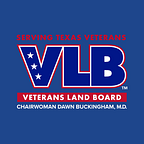73rd Anniversary of the WAVES of World War II
Women have supported the United States military during conflicts since the American Revolution, however, the first time that women served in the military in an official capacity was during World War II.
July 30, 2015 marked the 73rd anniversary of the creation of Women Accepted for Volunteer Emergency Service or WAVES, a WWII division of the U.S. Naval Reserve. As the name suggests, the WAVES were an all female division, led by Lieutenant Commander Mildred McAfee, the first female commissioned officer in U.S. Naval history. LCDR McAfee was the president of Wellesley College at the time, but took a leave of absence to become the first director of the WAVES.
The WAVES were established only a few months after the Women’s Auxiliary Army Corp (WAAC) was created. After convincing the U.S. Navy to consider a women’s reserve corps, First-Lady Eleanor Roosevelt persuaded the U.S. Congress to approve the WAVES, and President Roosevelt signed the corps into law on July 30, 1942. The WAVES then became an official component of the Navy. In October 1943, WAVES members were awarded the same rank, ratings and salary as their male counterparts.
Almost immediately after the WAVES were created, women from all over the country entered the program as enlisted personnel by attending the V10 WAVE Enlisted Rating Volunteer Program. Women who wanted to become officers attended the V9 WAVE Officer Candidate Volunteer Program and went through basic training as seamen recuits, followed by officer training as midshipman, and finally graduating as ensigns. By the fall of 1942 the U.S. Navy had 10,000 women prepared for active service.
At first the WAVES were only trained to carry out secretarial and clerical duties, but as more men went overseas to war, the functions they performed expanded to include jobs in aviation, medicine, science, technology and communications. In the fall of 1942 the Bureau of Aeronautics restricted aviator control tower operator positions to WAVES only, because they recognized the WAVES ability to react quickly and accurately while under stress. Many WAVES took cryptology classes and received code training at Smith College in Massachusetts, so they could work on the equipment used to break coded German messages. Other WAVES served as meteorologists and translators.
The WAVES were not allowed to serve aboard Navy vessels or in combat aircraft, and were initially barred from duty outside the continental United States. By the WAVES first birthday in 1943, there were 27,000 women in service and by the end of WWII there were over 8,000 female officers and 80,000 enlisted WAVES. Their attention to detail was invaluable and the numerous non-combat missions that the WAVES accomplished were vital to the war effort.
Two former WAVES shared their stories with VLB Voices of Veterans program coordinator James Crabtree:
Lorrie Henderson was born in Cedar Rapids, Iowa and attended Cornell College in Mount Vernon as an art major. Mrs. Henderson was living in New York when she joined the WAVES after being inspired by a poster of a WAVES member launching a weather balloon. She went to boot camp for three months in the Bronx in New York City where she and her fellow WAVES completed rigorous training including physical fitness, airplane recognition and history of the war. While studying at Cornell College she elected to take an engineering drawing course as her math requirement and as a result, had the highest mechanical aptitude score in WAVES training history. Mrs. Henderson served as a draftsman in 1945 while stationed on the Treasure Island Naval Base in northern California and reached the rank of Seaman Second Class. “We were doing the pen and ink file drawings of the rough drafts of radar, which were designed by the engineers and then photographed and reduced and put in textbooks,” said Mrs. Henderson. “They also had blackboard-sized forms for us to make very large drawings of the same images with paint.”
Frances Relyea, a native central Texan and graduate of Waco High School, joined the WAVES in 1943 and also attended basic training in the Bronx. She was assigned to Whiting Field, a naval air station near Milton, Florida where she was a bookkeeper for the Ships Store Ashore. Mrs. Relyea remembered that her sister was in the WAVES too,
“She was stationed in Washington D.C. and ran across our records one time. She told our mother that they didn’t miss a thing, everything about us was in that record.”
If you served in the United States military and live in Texas, the VLB Voices of Veterans oral history program would be honored to record your story. For the past ten years, Voices of Veterans has been documenting the first-person accounts of Texas Veterans and archiving the transcripts in the Office of Veterans Records for future researchers, historians, genealogists and the general public. For more information please contact program coordinator Monica Brown at 1–800–252–8387 or monica.brown@glo.texas.gov.
